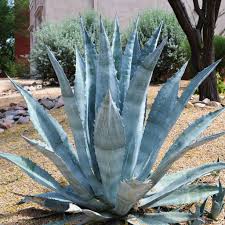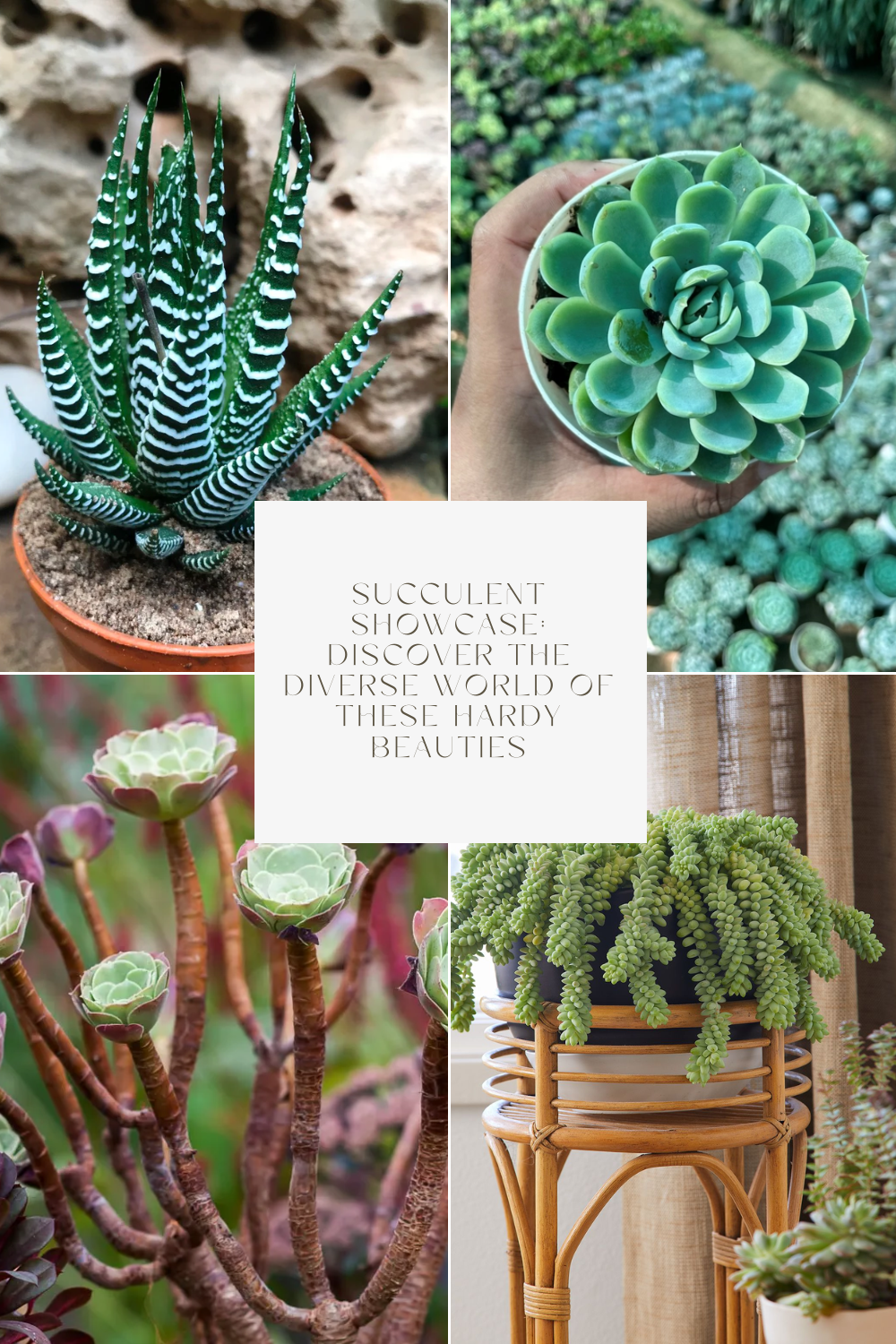Popular types of succulents include Aloe, Echeveria, Sedum, and Agave. Succulents are a diverse group of plants known for their ability to store water in their leaves, stems, or roots. With a wide range of shapes, sizes, and colors, they are perfect for both indoor and outdoor gardening.
1. Aloe Vera
Aloe Vera is a succulent plant characterized by its thick, fleshy leaves which are often lance-shaped and taper to a point. The leaves have serrated edges with small, white teeth. The leaves are typically green but can vary in shade, sometimes appearing more bluish-green or even gray-green depending on the species and growing conditions. Aloe Vera’s versatility and effectiveness in treating various ailments make it a valuable plant both in traditional and modern medicine.
Uses
- Healing Burns: Aloe Vera is renowned for its soothing and cooling properties, making it an effective natural remedy for treating burns, including sunburn. The gel extracted from its leaves provides a cooling effect and helps in the healing process.
- Skin Conditions: The plant’s anti-inflammatory and moisturizing properties make it useful for treating various skin conditions such as psoriasis, eczema, and dry skin. It can also help in reducing acne and healing minor cuts and abrasions.
- Digestive Aid: Aloe Vera juice is sometimes consumed for its potential benefits to the digestive system, including relief from constipation and support for overall gut health.
- Cosmetics: Aloe Vera is a popular ingredient in many skincare and cosmetic products due to its hydrating and healing qualities.
- Anti-Inflammatory: The plant’s compounds have anti-inflammatory effects, which can help reduce swelling and pain when applied topically or consumed.
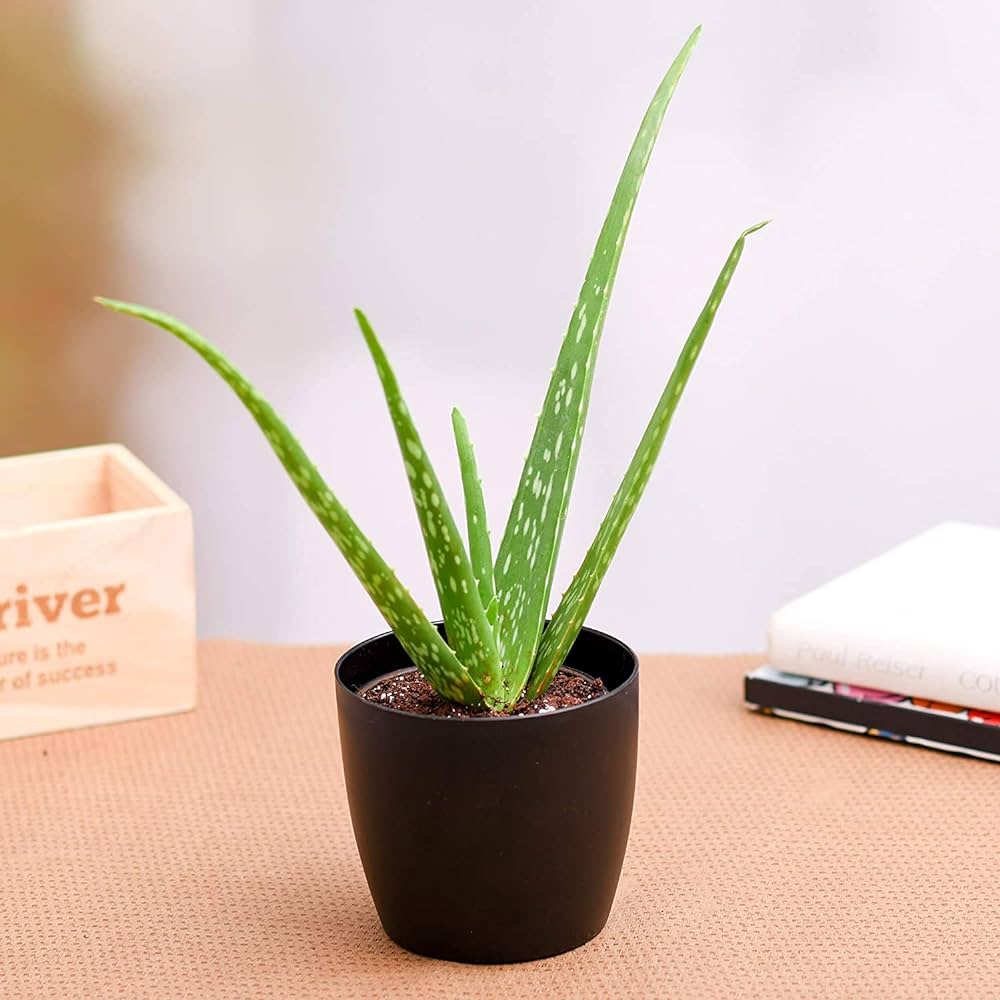
2. Echeveria
Echeveria plants are known for their attractive, rosette-shaped leaves which are typically fleshy and smooth. The leaves can come in various colors including green, blue, pink, red, and purple, often with a powdery or waxy coating. These succulents come in a range of sizes, from small varieties just a few inches in diameter to larger ones that can grow up to a foot wide.
Uses
- Decorative Arrangements: Echeverias are extremely popular in decorative arrangements due to their vibrant colors and appealing rosette shape.
- Garden Beds: Adding visual interest and texture.
- Container Gardens: Ideal for small spaces, patios, and indoor settings.
- Terrariums: Their compact size and low maintenance make them perfect for enclosed environments.
- Floral Arrangements: Often incorporated into bouquets and centerpieces for a unique, modern touch.
Varieties
- Echeveria ‘Lola’: Known for its delicate, rose-like appearance with pale lilac to grayish leaves.
- Echeveria ‘Perle von Nurnberg’: Features pinkish-purple leaves with a soft, pearlescent quality.
- Echeveria agavoides: Has pointed, green leaves with red edges, resembling an agave.
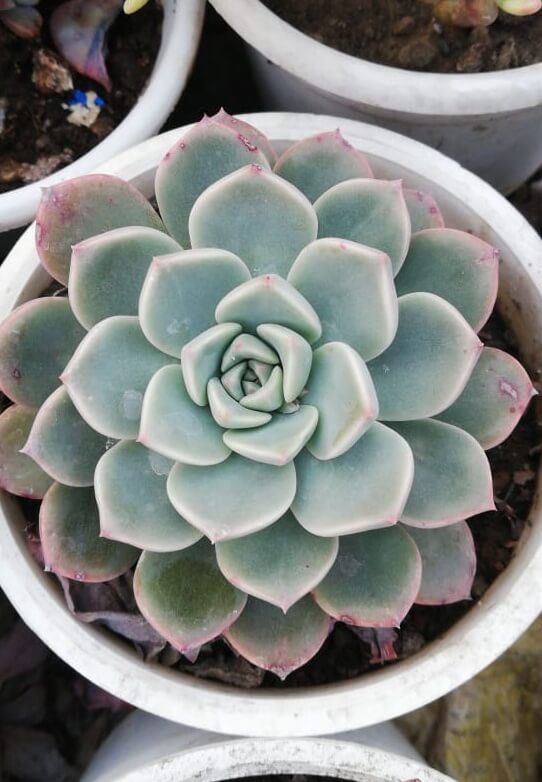
3. Sedum (Stonecrop)
Sedum, commonly known as Stonecrop, is a hardy succulent characterized by its small, fleshy leaves which often form dense mats or clumps. The leaves can vary in color, including shades of green, blue, red, and purple. Sedum plants produce clusters of star-shaped flowers that bloom in late summer to fall. The flowers can be yellow, white, pink, or red, depending on the species.
Uses
- Ground Cover: Due to its mat-forming habit, Sedum is often used as ground cover to prevent soil erosion and suppress weeds.
- Rock Gardens: Its ability to thrive in well-draining, rocky soils makes it a perfect addition to rock gardens.
- Green Roofs: Sedum is a popular choice for green roofs due to its low maintenance needs and ability to endure harsh rooftop conditions.
- Container Gardening: Ideal for container gardens, Sedum can add texture and color to mixed plantings and arrangements.
Varieties
- Sedum ‘Autumn Joy’: Known for its large, pink flower clusters that turn a rich copper color in the fall.
- Sedum spurium ‘Dragon’s Blood’: Features reddish leaves and bright red flowers, forming a striking ground cover.
- Sedum acre (Goldmoss Stonecrop): A low-growing variety with yellow flowers and bright green leaves.
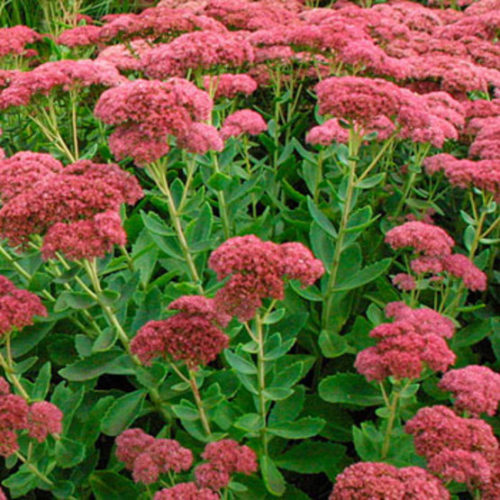
4. Crassula (Jade Plant)
The Jade Plant, also known as Crassula, is a succulent with a tree-like structure. It has thick, glossy, oval-shaped leaves that are typically a rich green, sometimes with a red tinge on the edges when exposed to bright light. As the plant matures, it can develop a thick, woody stem, resembling a miniature tree. Jade Plants can grow to a significant size indoors, often reaching up to 3 feet tall, but they can remain smaller when kept in small pots.
Uses
- Houseplant: Jade Plants are popular as houseplants due to their attractive appearance and ease of care. They can thrive indoors with minimal maintenance.
- Bonsai: The tree-like structure and slow growth of Jade Plants make them suitable for bonsai cultivation. They can be pruned and shaped to create miniature trees.
- Decorative: Often used as decorative plants in homes, offices, and gardens, they add a touch of greenery and can be paired with other succulents for a diverse display.
Varieties
- Crassula ovata: The most common variety, known simply as the Jade Plant.
- Crassula ovata ‘Hobbit’: Features tubular, contorted leaves that give it a unique appearance.
- Crassula ovata ‘Gollum’: Similar to the ‘Hobbit’ variety but with more pronounced tubular leaves that resemble fingers.
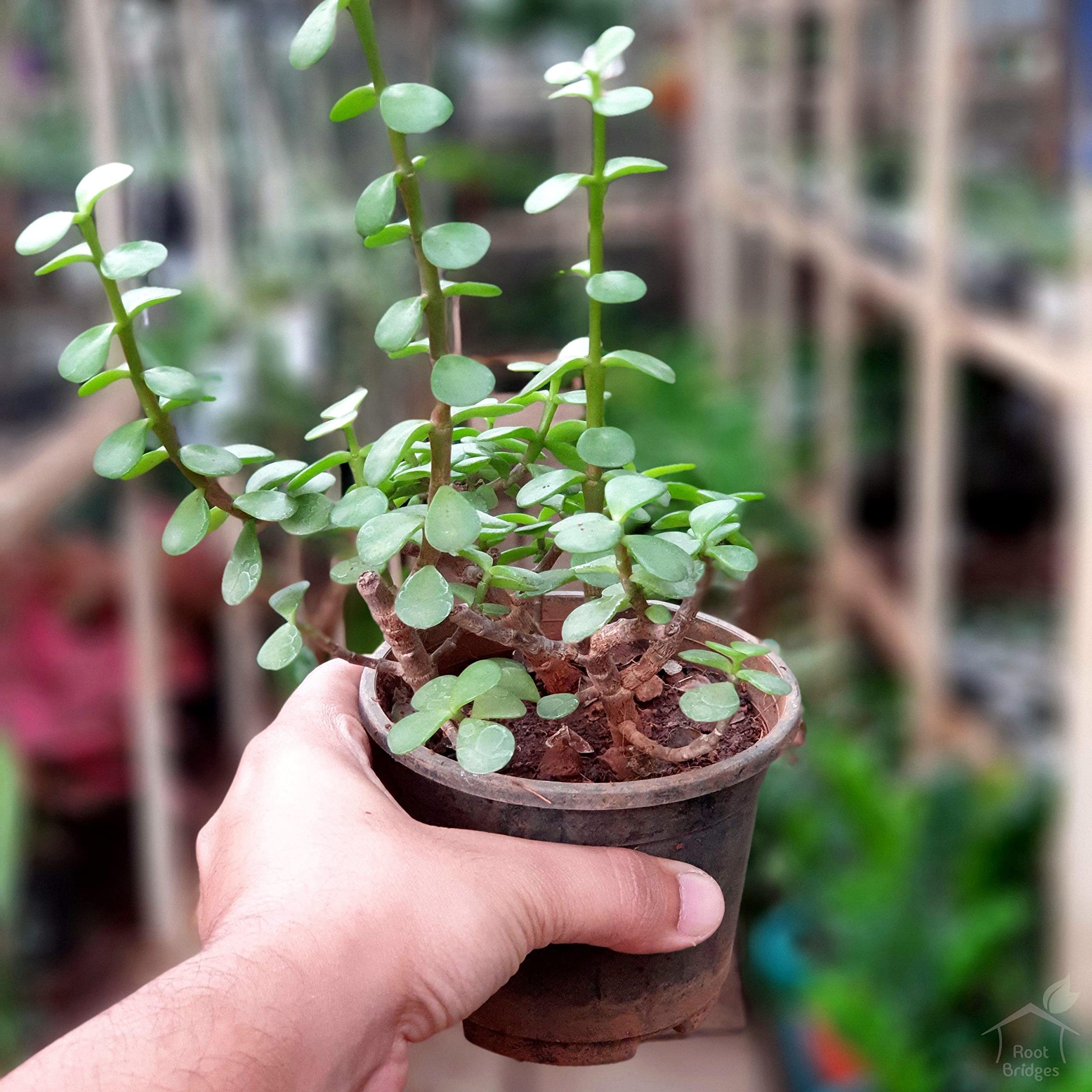
5. Haworthia
Haworthia are small, rosette-forming succulents. Their leaves are typically thick, fleshy, and pointed. Many species feature distinctive white stripes, spots, or bands, which can give them a striking, striped appearance. Generally, Haworthia are compact plants, making them ideal for small spaces. Most species grow to a height of about 3 to 5 inches, with a similar spread.
Uses
- Indoor Growing: Haworthia are perfect for indoor growing due to their small size and minimal care requirements. They are often used in:
- Desk Plants: Their compact size makes them ideal for desks and small spaces.
- Terrariums: Suitable for closed or open terrariums due to their low moisture needs.
- Container Gardens: Often grown in small pots or mixed succulent arrangements.
Varieties
- Haworthia fasciata (Zebra Plant): Known for its striking white horizontal stripes on dark green leaves.
- Haworthia attenuata: Similar to H. fasciata but with more pronounced tubercles (raised, white bumps).
- Haworthia cooperi: Features translucent, fleshy leaves that can appear almost see-through at the tips.
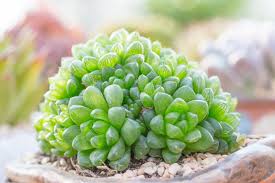
6. Agave
Agave plants are large, rosette-shaped succulents with thick, spiky leaves that often have sharp edges and tips. The leaves are typically gray-green or blue-green, though some species can have more varied coloring. Agave plants can range significantly in size, from small varieties suitable for containers to large species that can reach several feet in height and width.
Uses
- Tequila Production: Agave tequilana, commonly known as Blue Agave, is used to produce tequila. The heart of the plant, or “piña,” is harvested and fermented to create this popular alcoholic beverage.
- Sisal Fiber: Some Agave species, such as Agave sisalana, are cultivated for their strong fibers, which are used to make ropes, mats, and other products.
- Ornamental Planting: Many Agave species are popular in landscaping for their dramatic form and drought tolerance. They are often used in xeriscaping, rock gardens, and as focal points in garden designs.
Varieties
- Agave tequilana (Blue Agave): Used for tequila production, characterized by its blue-green leaves.
- Agave americana (Century Plant): Known for its large size and striking appearance, often used in landscaping.
- Agave parryi (Artichoke Agave): Compact and more cold-tolerant, with blue-gray leaves arranged in tight rosettes.
